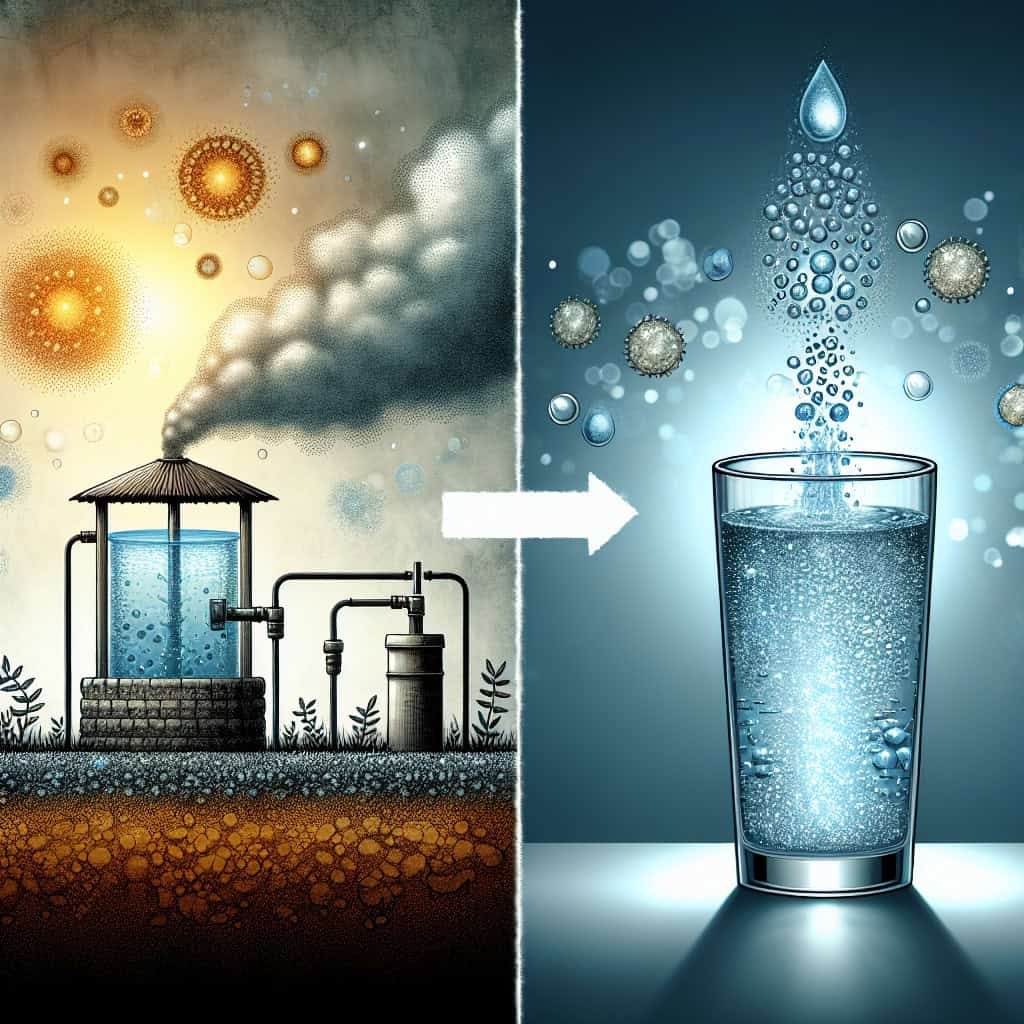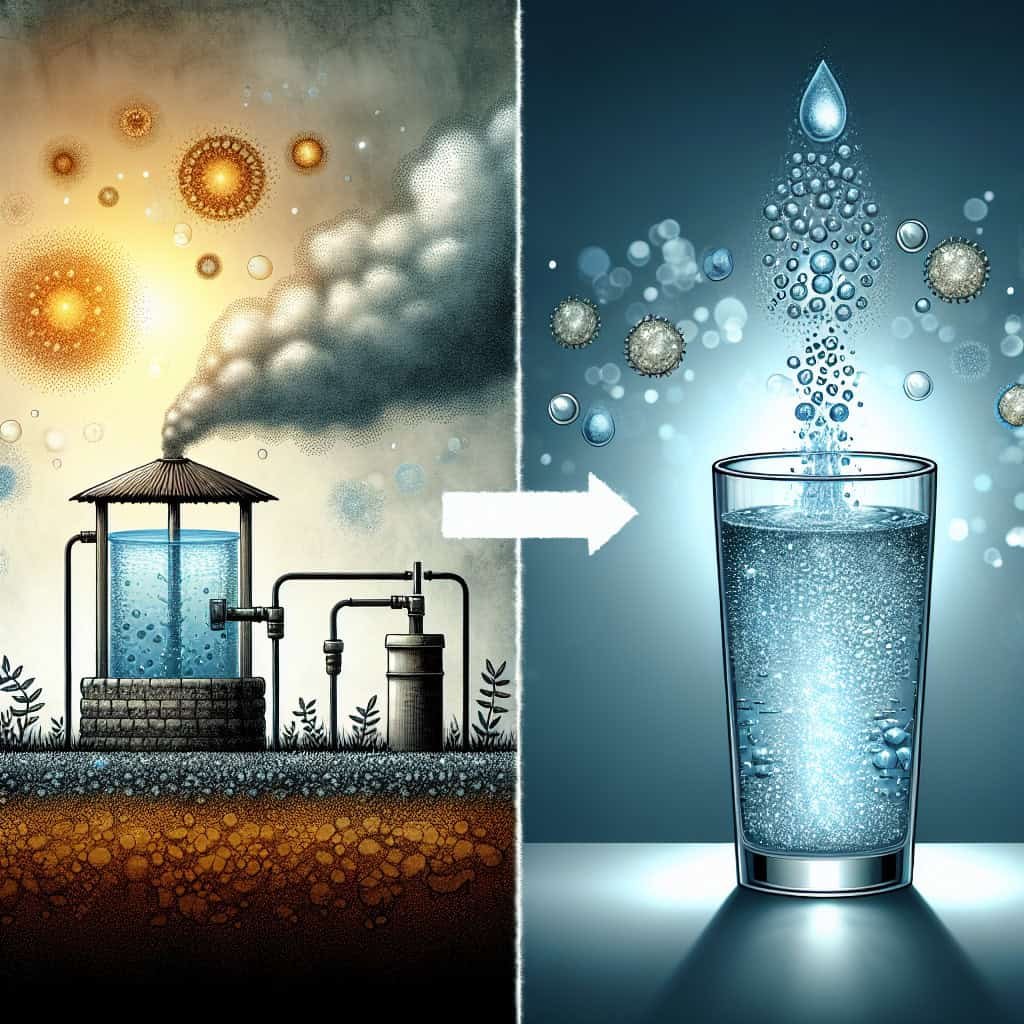So, you’ve discovered that your well water has high levels of molybdenum, and you’re wondering what treatment options are available to resolve this issue. Well, you’ve come to the right place! In this article, we’ll explore the different treatment methods that can effectively reduce molybdenum levels in well water, ensuring that you and your loved ones have safe and clean drinking water.
Factors to Consider in Treating Well Water with High Levels of Molybdenum
Understanding Molybdenum Contamination
When it comes to treating well water with high levels of molybdenum, it’s important to understand the nature of molybdenum contamination. Molybdenum is a naturally occurring element that can be found in rocks, soil, and groundwater. It can leach into well water through the dissolution of minerals or from human activities such as mining or industrial processes. High levels of molybdenum in well water can pose health risks and may require treatment to ensure the water is safe for drinking and other household uses.
Impact of High Levels of Molybdenum on Health
High levels of molybdenum in well water can potentially have adverse effects on human health. The primary concern is chronic exposure to elevated levels of molybdenum, which can lead to the accumulation of the element in the body over time. This can interfere with the body’s ability to absorb and utilize other essential nutrients such as copper, iron, and zinc. In extreme cases, long-term exposure to high levels of molybdenum can cause symptoms such as diarrhea, anemia, joint pain, and liver damage. Therefore, it is crucial to consider the potential health impacts when dealing with molybdenum contamination in well water.
Water Quality Standards for Molybdenum
To ensure the safety of drinking water, various regulatory bodies have established water quality standards for molybdenum. These standards set maximum allowable concentrations of molybdenum in drinking water, typically measured in parts per billion (ppb) or micrograms per liter (µg/L). The specific standards may vary between countries or regions, but they generally aim to protect public health and minimize the risks associated with molybdenum contamination. It is essential to adhere to these standards when treating well water with high levels of molybdenum.
Assessing the Concentration of Molybdenum in Well Water
Before deciding on a treatment method, it is crucial to accurately assess the concentration of molybdenum in well water. This can be done through water testing conducted by certified laboratories. The test results will provide an understanding of the scale of the contamination and help determine the most appropriate treatment approach. Additionally, regular monitoring of molybdenum levels is essential to ensure treatment effectiveness and maintain water quality over time.

Physical and Chemical Methods of Treating Well Water with High Levels of Molybdenum
Adsorption
Adsorption is a commonly used physical treatment method for molybdenum removal. It involves the use of adsorbent materials that can attract and retain molybdenum ions from the water. Some commonly employed adsorbents for molybdenum removal include activated alumina, activated carbon, and certain types of clay. During the treatment process, the well water is passed through a bed of the adsorbent material, allowing the molybdenum to be adsorbed onto the surface of the material. The treated water then passes through the system, leaving behind the removed molybdenum. Adsorption is an effective and economical method for molybdenum removal, making it a popular choice for treating well water with high levels of molybdenum.
Precipitation and Coagulation
Another physical and chemical method for treating well water with high levels of molybdenum is precipitation and coagulation. This method involves the addition of chemicals to the water, such as lime or ferric chloride, to induce the formation of molybdenum solids. These solids can then be separated from the water through sedimentation or filtration. Precipitation and coagulation can be an effective treatment option for molybdenum removal, particularly when combined with other processes such as filtration or adsorption.
Ion Exchange
Ion exchange is a chemical treatment method that involves replacing unwanted ions in the water with desirable ions. In the case of molybdenum removal, a specialized resin is used to exchange molybdenum ions with other ions, typically chloride or sulfate. The resin absorbs the molybdenum ions from the water, allowing the treated water to be free of molybdenum contamination. Ion exchange is a highly efficient method for molybdenum removal, but it requires periodic regeneration of the resin to maintain its effectiveness.
Reverse Osmosis
Reverse osmosis is a widely used method for treating various contaminants in well water, including molybdenum. This process involves forcing the well water through a semipermeable membrane that selectively blocks the passage of certain substances, including molybdenum ions. Reverse osmosis effectively removes molybdenum from the water, producing clean and safe drinking water. However, it is worth noting that reverse osmosis may also remove beneficial minerals from the water, so appropriate remineralization may be necessary after treatment.
Activated Carbon Filtration
Activated carbon filtration is a physical and chemical treatment method that utilizes the adsorptive properties of activated carbon to remove molybdenum ions from well water. The activated carbon acts as a porous material that can adsorb molybdenum and other contaminants as the water passes through it. This method is relatively simple and cost-effective, making it a viable option for treating well water with high levels of molybdenum. Regular replacement or reactivation of the activated carbon is necessary to maintain its efficiency.

Biological Methods of Treating Well Water with High Levels of Molybdenum
Bioremediation
Bioremediation is a natural treatment method that harnesses the power of living organisms to remove molybdenum from well water. This process involves the use of specific microorganisms that have the capability to reduce or immobilize molybdenum ions through various metabolic processes. These microorganisms can be introduced into the water or present in specially designed treatment systems. Bioremediation can be an environmentally friendly and sustainable option for molybdenum removal, but it may require longer treatment times and careful monitoring to ensure its effectiveness.
Phytoremediation
Phytoremediation is another biological treatment method that utilizes plants to remove molybdenum from well water. Certain plant species have the ability to absorb molybdenum ions through their roots and store them in their biomass. This method involves growing these plants in the water or utilizing plant-based wetlands to filter out molybdenum from the well water. Phytoremediation can be an appealing option for molybdenum removal, especially in environmentally sensitive areas, as it offers a natural and aesthetically pleasing solution.

Combined Treatment Systems for Well Water with High Levels of Molybdenum
Oxidation and Filtration
Combining oxidation and filtration can be an effective treatment system for well water with high levels of molybdenum. In this process, oxidizing agents such as chlorine or ozone are used to convert molybdenum ions to insoluble forms, which can then be removed through filtration. The oxidation step helps enhance the effectiveness of filtration and ensures better molybdenum removal. This combined treatment system is widely used and can provide excellent results in molybdenum-contaminated well water.
Sorption and Filtration
Another combined treatment approach for well water with high levels of molybdenum is sorption and filtration. This method combines the benefits of both adsorption and filtration to effectively remove molybdenum. The sorption process involves the use of specialized resins or adsorbent materials to attract and retain molybdenum ions. The treated water then passes through a filtration system to remove any remaining particles or impurities, ensuring the water is clean and free of molybdenum contamination.

Considerations for Choosing an Effective Treatment Option
Treatment Costs
When selecting a treatment option for well water with high levels of molybdenum, it is essential to consider the associated costs. The cost of treatment can vary depending on factors such as the chosen method, the scale of the contamination, and the specific requirements of the well system. It is advisable to evaluate different treatment options and compare their costs to find a solution that is both effective and financially feasible.
Maintenance Requirements
Each treatment method for molybdenum removal may have different maintenance requirements. It is important to understand the ongoing maintenance needs of the chosen treatment option to ensure its long-term effectiveness. Regular monitoring, replacement of filter media or resins, and adherence to recommended maintenance schedules are crucial for optimal performance.
Water Quality Monitoring
Monitoring the quality of well water after treatment is essential to ensure that the chosen treatment option effectively removes molybdenum and maintains water quality within established standards. Regular testing will provide valuable information on the efficiency of the treatment system and any potential changes in molybdenum concentration over time. Water quality monitoring should be a part of the overall well water management plan to ensure ongoing safety and compliance.
Environmental Impact
Considering the environmental impact of the chosen treatment option is important for maintaining ecological balance. Some treatment methods, such as chemical-based processes, may have potential environmental implications due to the use and disposal of chemicals. In contrast, biological methods like bioremediation and phytoremediation offer more sustainable and eco-friendly approaches. Assessing the environmental impact of the treatment options and choosing the most environmentally responsible solution can contribute to overall sustainability.
In conclusion, treating well water with high levels of molybdenum requires careful consideration of various factors. Understanding the nature of molybdenum contamination, its impact on health, and adhering to water quality standards are essential in determining the appropriate treatment approach. Physical and chemical methods such as adsorption, precipitation, ion exchange, reverse osmosis, and activated carbon filtration offer effective options for molybdenum removal. Biological methods like bioremediation and phytoremediation provide natural and sustainable alternatives. Combined treatment systems combining oxidation and filtration or sorption and filtration can also be highly effective. Considering factors such as treatment costs, maintenance requirements, water quality monitoring, and environmental impacts will help in choosing the most suitable and effective treatment option for well water contaminated with high levels of molybdenum.


